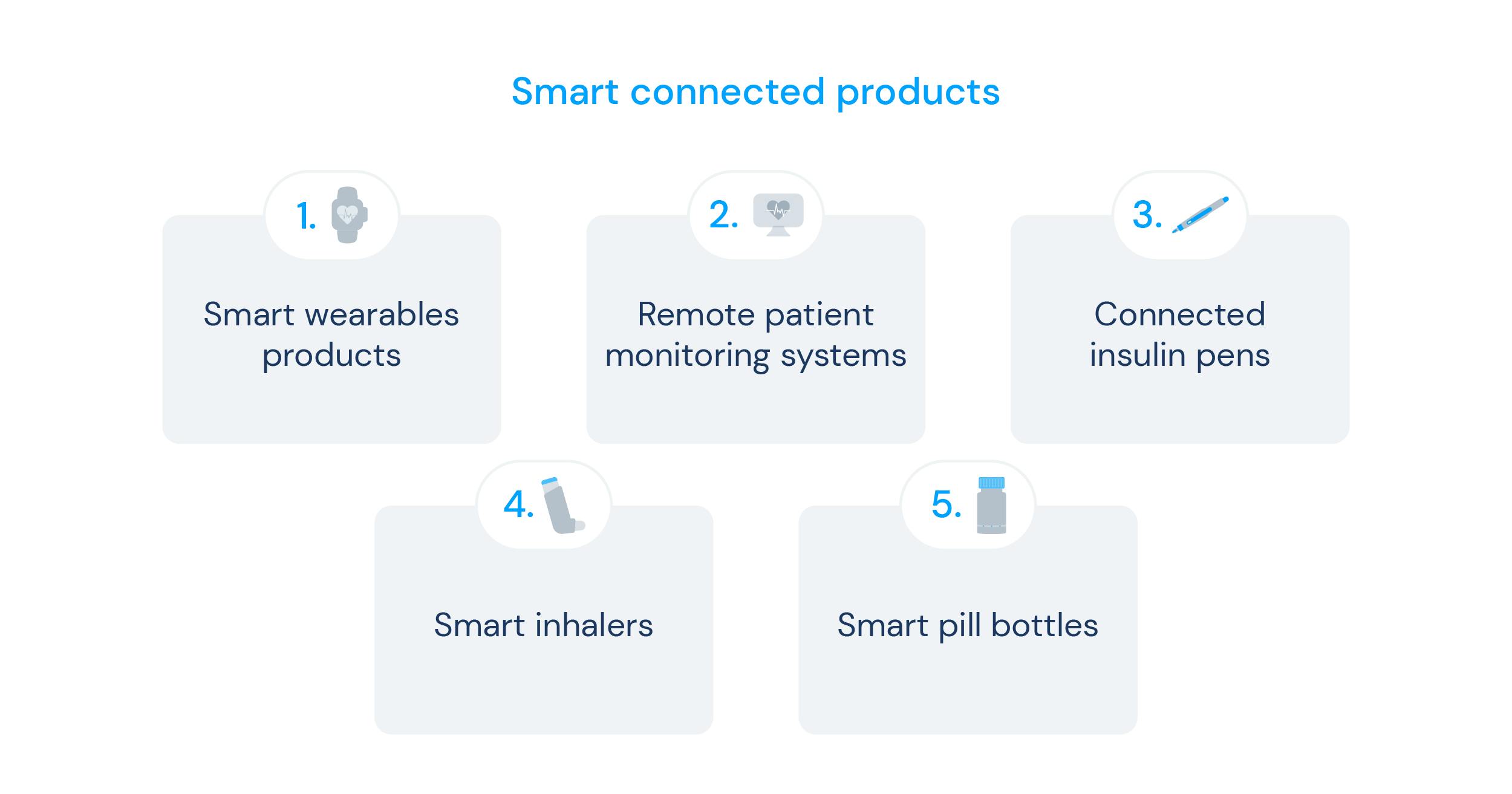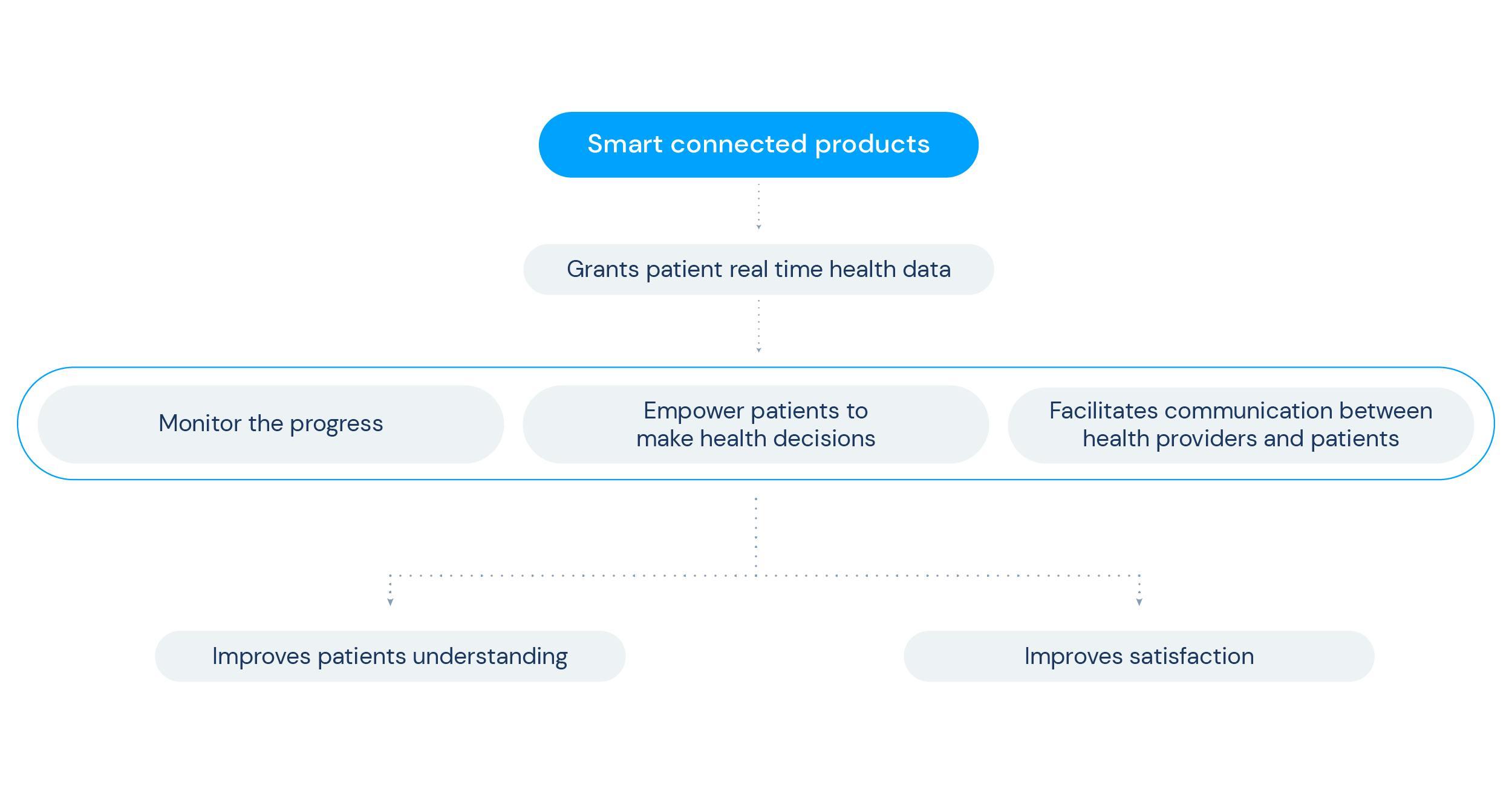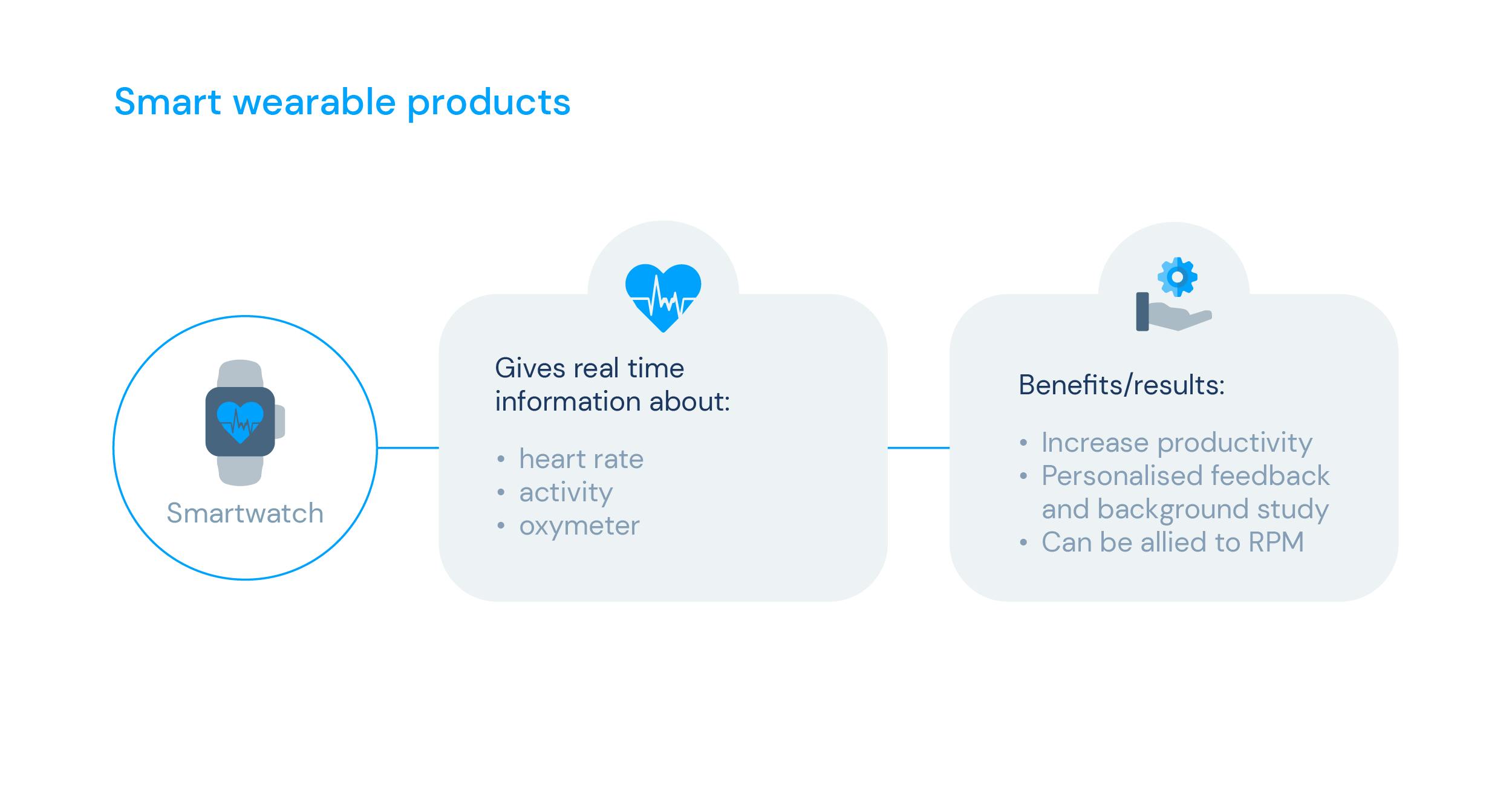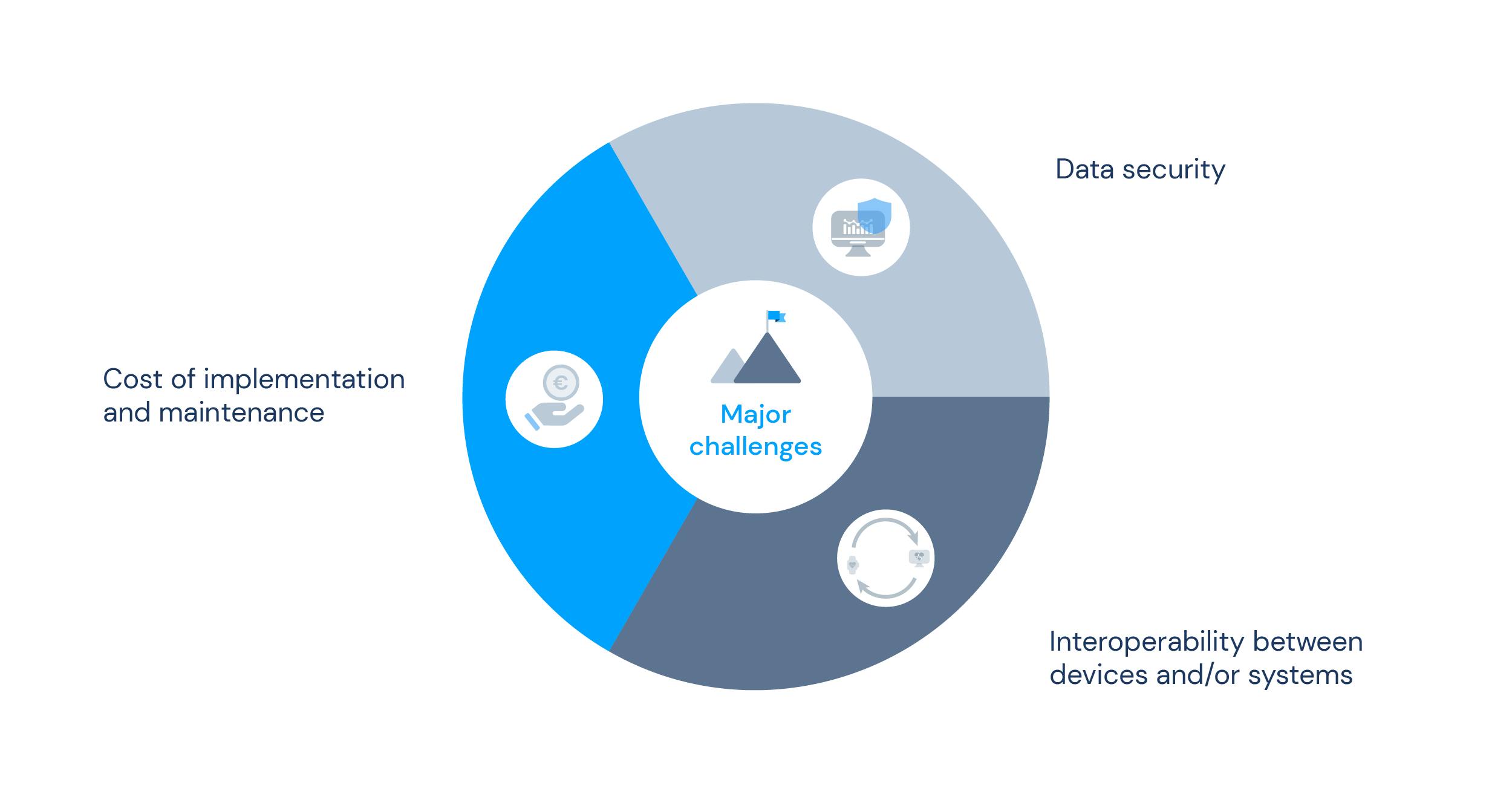
5 smart connected products that are making healthcare more intelligent
The healthcare industry has undergone significant transformation in recent years with the advent of smart connected products. They are electronic devices incorporating advanced technologies like sensors, mobile applications and cloud computing to collect, transmit and analyse data about their usage, location and status via wireless connectivity. Such devices are designed to connect with other technologies or networks.
In terms of healthcare, they have the potential to revolutionise service delivery by enabling more personalised and effective care. By being able to monitor various aspects of a patient's health, provide real-time feedback, and facilitate communication between patients and healthcare providers, smart connected products are allowing the delivery of a more complete service and treatment.
Overall, the power of smart connected products in healthcare lies in their ability to improve the quality and efficiency of care delivery. By providing real-time data, personalised treatment options, and more autonomy to patients, these products are helping to transform the healthcare industry and improve patient outcomes. As technology continues to evolve, we can expect to see even more innovative uses of smart connected products in healthcare in the years to come. This article will explore how 5 smart connected products benefit the healthcare industry and facilitate proactive, personalised, cost-effective healthcare.

Healthcare with smart connectivity
Smart connected products have already made a significant impact on healthcare in a variety of ways. Wearable devices such as fitness trackers and smartwatches, for example, have enabled individuals to track their health metrics and provide valuable data to healthcare providers and physicians, who can use this information to monitor chronic conditions, identify potential health issues, and provide more personalised treatment options.
They are also paving the way for a broader approach to telemedicine. Connected devices such as smartphones and laptops are enabling remote patient monitoring and mobile health apps which allow patients to receive medical care from their homes. This is particularly beneficial for individuals in rural or remote areas who may not have accessible healthcare services.
Smart connected products are also enabling healthcare providers to manage their operations better. Connected inventory management systems can help hospitals and clinics track medical supplies and equipment, reducing waste and improving efficiency. Smart scheduling systems can help providers manage patient appointments and reduce wait times.
Last but not least, smart connected products are also revolutionising medical devices and equipment, making the treatment for some chronic diseases easier for patients to manage and follow. These devices employ advanced technologies to collect and analyse patient data in real time, which can then be leveraged to inform care decisions, enhance patient outcomes, and elevate the overall healthcare experience. As healthcare becomes increasingly intricate and patient-centric, employing smart connected products has become indispensable for healthcare organisations that aspire to provide high-quality, patient-centred care.
Here are some medical smart connected devices who are actively improving patient outcomes and healthcare delivery.

1. Smart wearables: from fitness to health
The term "wearable" refers to any subject worn on the body, such as watches, glasses, clothing, and jewellery, equipped with sensors, processors, and connectivity features. These devices can track various health and fitness metrics, monitor environmental conditions, send notifications and alerts, and provide communication with other devices and networks. Smart wearables are often designed to enhance convenience, improve health and wellness, increase productivity, and provide a personalised user experience.
In the context of technology, they collect and transmit data about the user's physiological or environmental conditions, enabling well-being monitoring. Very often, wearable technology is based on conventional electronics powered by traditional batteries. This includes mobile phone peripherals (devices, interfaces or sensors connected to the phone), smartwatches and many more. While many wearable devices are available, not all can measure health statuses. These are some examples of smart wearables who can actively aid in health monitoring:
- Fitness trackers: are similar to smartwatches but focus more on exercise tracking. They typically have sensors that track steps taken, distance travelled, and burned calories.
- ECG monitors: These devices are worn on the chest and can track the heart's electrical activity. They are often used to diagnose heart conditions.
- Glucose monitors: They can be worn on the body to track blood glucose levels in people with diabetes or at risk of developing the disease.
- Pulse oximeters: Worn on the finger, they track blood oxygen levels and are often used to monitor people with respiratory conditions. Pulse oximeters were also extensively used to remotely monitor patients with COVID-19 during the pandemic.
Wearable devices can be implemented in different ways, such as through body sensor networks (BSNs), which are systems composed of a network of wearable devices. These devices can be implantable, wearable, fixed in position, or portable and carried by the user. In the last few years, companies like Apple, Samsung, and Xiaomi have been in the field of wearable technology, mainly smartwatches. In healthcare, wearable devices and wireless BSN offer a platform for establishing personalised health monitoring systems that can record an individual's chronic and acute events under natural physiological conditions and in any environment.
The big challenge for wearable technology is the consistent monitoring of a patient's physiological or biochemical parameters under natural physiological conditions, as most diagnostic tools offer information that is essentially a "snapshot in time". In this sense, several wearable devices have been introduced to provide helpful information to assess and monitor a patient's respiratory function or provide environmental information relevant to the respiratory system, such as arterial oxygen saturation, respiratory rate, breathing pattern, activity, and air quality.
The development of Internet of Things (IoT), the reduction in costs of wearable sensors and respiratory disease-related devices, and the increased use of smartphones, represent a real opportunity. It opens essential new perspectives in various fields, particularly monitoring and managing chronic respiratory diseases and the data these devices can provide.

2. Remote patient monitoring: better care at a distance
Remote patient monitoring (RPM) has been gaining popularity as a healthcare technology that allows healthcare providers to monitor patients from a distance. This technology uses smart connected devices, such as wearables, sensors, telemedicine video consultations and other digital health tools, to collect real-time patient health data, including vital signs, glucose levels, and blood pressure. This data is then transmitted back to healthcare providers and physicians, who can use it to monitor patients and make informed decisions about their care.
RPM is especially beneficial for patients with chronic conditions requiring frequent monitoring. It allows healthcare providers to detect changes in their health status in real-time, provide timely interventions and even detect health issues at an early stage. Smart connected devices have made RPM more accessible and cost-effective, as patients can easily use them from their homes. Furthermore, the data collected by these devices is more accurate and reliable than self-reported data, which makes RPM more efficient in improving patient outcomes.
This virtual care monitoring model also has the potential to reduce healthcare costs by decreasing the need for hospital admissions and emergency room visits. It is especially beneficial for patients who live in remote areas or have limited access to healthcare facilities, since these virtual care platforms, such as the one offered by knok, allow patients to connect with healthcare providers from their own homes, eliminating the need for costly and time-consuming in-person visits.
3. Smart insulin pens: the revolution of diabetes care
Connected insulin pens, also known as smart insulin pens, are a relatively new technology that is transforming how people with diabetes manage their insulin treatment. These pens have Bluetooth or wireless technology that connect them to a smartphone app, providing users with features that increase efficiency and accuracy.
One of the main benefits of connected insulin pens is their ability to automatically track insulin doses and send this information to the mobile app. This means that people with diabetes no longer need to manually follow their insulin doses, as the pen does it for them. The app can also remind users to take their insulin, helping them stay on top of their treatment regimen. Connected insulin pens can also give users insights into their insulin usage, including how much insulin they use, when, and how often they use it. This information can help optimise treatment and prevent complications, such as hypoglycemia. For example, if the app shows that a person with diabetes consistently takes too much insulin at a specific time of day, they can adjust their treatment plan accordingly.
A study published in the Journal of Diabetes Science and Technology in 2019 followed 40 adults with type 1 diabetes who used a connected insulin pen for 24 weeks. The participants were asked to record their insulin doses in a paper logbook for the first 12 weeks and then switch to using the connected insulin pen and its accompanying smartphone app for the next 12 weeks. The study found that using the corresponding insulin pen was associated with improved insulin dose accuracy and reduced frequency of hypoglycemic events. The participants also reported that using the connected insulin pen was more convenient and less burdensome than a traditional insulin pen and paper logbook.
Overall, connected insulin pens are a promising new technology that can potentially improve the lives of people with diabetes. By providing users with automatic dose tracking, reminders, and insights into their insulin usage, these pens can help optimise treatment and prevent complications. As more and more people with diabetes adopt connected insulin pens, the industry expects significant advancements in diabetes care and management.
4. Smart inhalers: the advantages of connectivity in respiratory care
Smart inhalers combine traditional inhaler technology with digital sensors. These connected inhalers can potentially revolutionise how people manage their respiratory conditions, such as asthma and chronic obstructive pulmonary disease (COPD). They include sensors that track medication usage, airflow, and other respiratory parameters, in order to transmit this data to a smartphone app or other digital platform, giving patients real-time feedback on their inhaler usage and respiratory status.
One of the key benefits of smart inhalers is their ability to improve medication adherence. Studies have shown that medication non-adherence is a common problem among people with respiratory conditions, which can lead to worsening symptoms and increased healthcare costs. However, by providing patients with reminders and tracking features, smart inhalers can help improve the use of medication and reduce the risk of complications. Smart inhalers can also help patients and healthcare providers better understand how well their respiratory condition is managed. By tracking medication usage, peak airflow rates, and other respiratory parameters, these devices can provide insights into how well a patient's condition is being controlled. This information can be used to optimise treatment plans and prevent exacerbations.
Several case studies have demonstrated the potential of smart inhalers in improving respiratory outcomes. For example, a study published in the Journal of Allergy and Clinical Immunology in 2020 found that patients with uncontrolled asthma who used a smart inhaler experienced significant improvements in asthma control compared to those who used a traditional inhaler. Another study published in the journal Respiratory Medicine in 2019 found that patients with COPD who used a smart inhaler had significantly better medication adherence and fewer exacerbations than those who used a traditional inhaler.
In summary, smart inhalers are a promising new technology that can improve the lives of people with respiratory conditions. By improving medication adherence, providing real-time feedback on respiratory status, and optimising treatment plans, smart inhalers can help reduce symptoms and improve overall respiratory health.
5. Smart pill bottles: optimised medication management
Smart pill bottles are an innovation in medication management that aim to improve medication adherence and patient outcomes. These devices provide patients with real-time feedback on their medication use by using sensors to detect when a patient has taken their medication. This information is transmitted to a smartphone app and other digital platforms, which can provide patients with reminders and other insights to help them stay on track with their medication regimen.
The biggest benefit of smart pill bottles is their ability to improve medication adherence. Medication non-adherence is a major problem among patients, since they can lead to worsened health outcomes and increased healthcare costs. However, by providing patients with reminders and feedback, smart pill bottles can help increase medication adherence and reduce the risk of complications. A case study published in the Journal of Medical Internet Research in 2021 found that using smart pill bottles significantly improved medication adherence among patients with chronic conditions. The study, which included over 200 patients, found that those who used the smart pill bottle had significantly higher medication adherence rates than those who used a traditional pill bottle.
Smart pill bottles can also benefit healthcare providers by giving them real-time information on their patients' medication use. This information can be used to identify patients at risk of non-adherence or medication-related complications and adjust treatment plans accordingly. In addition to improving medication adherence, smart pill bottles can also help reduce medication errors and improve patient safety. By providing patients with reminders and feedback. These devices can help prevent accidental overdoses or missed doses, which can lead to serious health consequences.
Challenges and limitations of smart connected products in healthcare
While smart connected products have the potential to revolutionise healthcare, they also face several challenges and limitations. One is the potential for information overload, as the vast amount of health data generated by these devices can make it difficult for healthcare providers to analyse and interpret information effectively. This can result in missing or omitted information, potentially compromising patient care. To solve this issue, it’s crucial to implement software and products that can explore all the information in a compatible way.
Another limitation is the digital divide, as not all patients may have access to the technology needed to use connected smart products. This can create disparities in healthcare, as those without access may receive a different level of care than those who do. In this case, health technology companies and providers must take action to make sure that smart connected products are used to improve health equity.
In addition, there is a risk that patients become overly dependent on these devices, decreasing patient autonomy and decision-making. To avoid this, it is vital to ensure that patients remain actively involved in their care and that smart connected products support, rather than replace patient involvement. Finally, the implementation of smart connected products in healthcare may also face regulatory challenges, particularly around data privacy, cybersecurity, and liability. As these technologies evolve, regulators must keep pace and ensure adequate safeguards to protect patient safety and privacy.
To address these challenges and limitations, healthcare organisations and technology developers must prioritise data security and privacy, invest in interoperability standards, and work to reduce the costs of implementing and maintaining these technologies. In addition, educating patients and healthcare providers about the benefits and limitations of these technologies can help increase adoption and improve overall outcomes.

The future of smart connected products in healthcare
In conclusion, smart connected products have the potential to transform the healthcare industry by improving health outcomes, enhancing the quality of care, and reducing costs. Using smart wearables and remote patient monitoring systems enables patients to assume an active role in their care and allows healthcare providers to manage chronic conditions more effectively. Additionally, connected smart insulin pens, smart inhalers, and smart pill bottles can assist patients in managing their medications and treatment plans more efficiently, further enhancing health outcomes.
However, as is typical with any new technology, smart connected products face challenges and limitations. For example, there are concerns regarding privacy, data security, and interoperability issues that require addressing to ensure that the advantages of these products are maximised while minimising risks.
Looking towards the future, the outlook for smart connected products in healthcare is optimistic, with ongoing innovation and growth in this field. The advancements in artificial intelligence, machine learning, and predictive analytics will enable healthcare providers to utilise the vast amounts of data generated by smart connected products to provide patients with more personalised, proactive care. As the healthcare sector moves towards a more patient-centric approach, smart connected products will play an increasingly crucial role in improving health outcomes and enhancing the overall healthcare experience.
At knok, we are dedicated to enhancing healthcare delivery by providing convenient and affordable access to care through technology integration. Our mission is to eliminate the barriers that restrict patients from receiving the care they require, enhance the quality of the service provided, and foster healthcare equity by providing access to care for underserved communities. Through our innovative approach to care, knok significantly impacts the healthcare industry and improves patients' lives.
Sources:
Smart healthcare: making medical care more intelligent
IOT Healthcare in 2023: companies, medical devices, and use cases
How Smart, Connected Products Are Transforming Competition
Measuring Arterial Oxygen Saturation Using Wearable Devices Under Varying Conditions